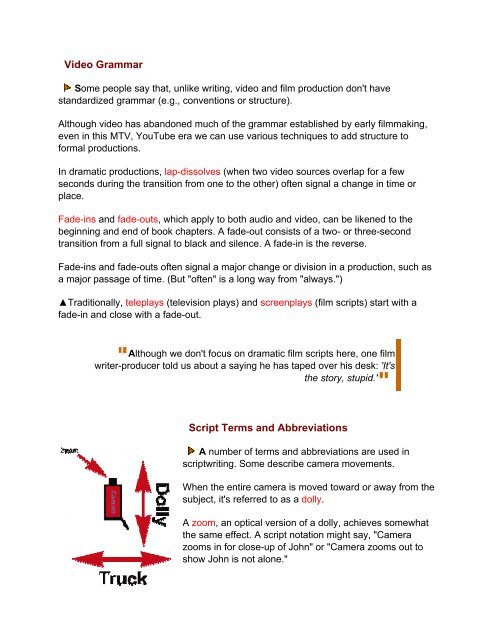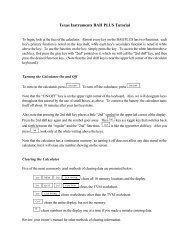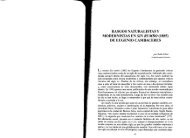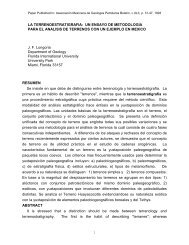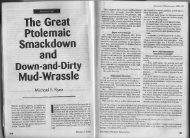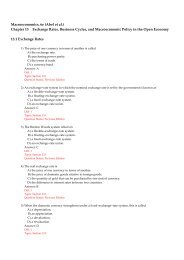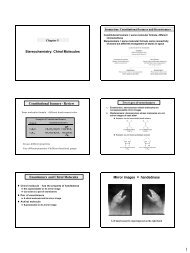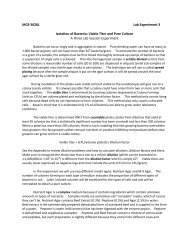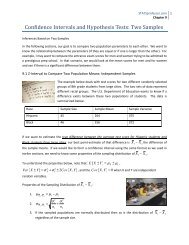Video Grammar Script Terms and Abbreviations
Video Grammar Script Terms and Abbreviations
Video Grammar Script Terms and Abbreviations
Create successful ePaper yourself
Turn your PDF publications into a flip-book with our unique Google optimized e-Paper software.
<strong>Video</strong> <strong>Grammar</strong><br />
Some people say that, unlike writing, video <strong>and</strong> film production don't have<br />
st<strong>and</strong>ardized grammar (e.g., conventions or structure).<br />
Although video has ab<strong>and</strong>oned much of the grammar established by early filmmaking,<br />
even in this MTV, YouTube era we can use various techniques to add structure to<br />
formal productions.<br />
In dramatic productions, lap-dissolves (when two video sources overlap for a few<br />
seconds during the transition from one to the other) often signal a change in time or<br />
place.<br />
Fade-ins <strong>and</strong> fade-outs, which apply to both audio <strong>and</strong> video, can be likened to the<br />
beginning <strong>and</strong> end of book chapters. A fade-out consists of a two- or three-second<br />
transition from a full signal to black <strong>and</strong> silence. A fade-in is the reverse.<br />
Fade-ins <strong>and</strong> fade-outs often signal a major change or division in a production, such as<br />
a major passage of time. (But "often" is a long way from "always.")<br />
▲Traditionally, teleplays (television plays) <strong>and</strong> screenplays (film scripts) start with a<br />
fade-in <strong>and</strong> close with a fade-out.<br />
Although we don't focus on dramatic film scripts here, one film<br />
writer-producer told us about a saying he has taped over his desk: 'It's<br />
the story, stupid.'<br />
<strong>Script</strong> <strong>Terms</strong> <strong>and</strong> <strong>Abbreviations</strong><br />
A number of terms <strong>and</strong> abbreviations are used in<br />
scriptwriting. Some describe camera movements.<br />
When the entire camera is moved toward or away from the<br />
subject, it's referred to as a dolly.<br />
A zoom, an optical version of a dolly, achieves somewhat<br />
the same effect. A script notation might say, "Camera<br />
zooms in for close-up of John" or "Camera zooms out to<br />
show John is not alone."
A lateral move is a truck. Note the illustration on the left.<br />
Some terms designate shots.<br />
Cuts or takes are instant transitions from one video source to another. In grammatical<br />
terms, shots can be likened to sentences where each shot is a visual statement.<br />
The cover shot or establishing shot are designated on a script by "wide-shot" (WS) or<br />
"long shot" (LS). Occasionally, the abbreviations XLS for extreme long shot or VLS for<br />
very long shot are used. These all can give the audience a basic orientation to the<br />
geography of a scene (i.e., who is st<strong>and</strong>ing where) after which you'll cut to closer shots.<br />
On small screen devices or in the relatively low-resolution medium of st<strong>and</strong>ard-definition<br />
television (SDTV), this type of shot is visually weak because important details aren't<br />
easy to see. Film <strong>and</strong> HDTV (high-definition television) don't have quite the same<br />
problem.<br />
Cover or establishing shots should be held only long enough to orient viewers to the<br />
relationship between major scene elements. (How close is the burning shed to the<br />
house?) Thereafter, they can be momentarily used as reminders or updates on scene<br />
changes as reestablishing shots.<br />
TV scripts are usually divided into audio <strong>and</strong> video columns, with shot designations in<br />
the left video column.<br />
So that you can see how some of these things come together, here are some sample<br />
scripts.<br />
Simple video script<br />
Dramatic film/video script format<br />
Commercial script<br />
News script<br />
Television <strong>and</strong> film scripts are available on the<br />
Internet for study. (See the section on Internet<br />
Resources at the end of this module.)<br />
You'll find the following shot designations<br />
relating to people:<br />
An LS (long shot) or FS (full shot) is a shot from<br />
the top of the head to the feet.
An MS (medium shot) is normally a shot from the waist up. (To save space, we've used<br />
a vertical rather than a horizontal format in this illustration.)<br />
An MCU (medium close-up) is a shot cropped between the shoulders <strong>and</strong> the belt line,<br />
rather than at the waist.<br />
A relatively straight-on CU (close-up) is the most desirable for interviews. Changing<br />
facial expressions, which are important to underst<strong>and</strong>ing a conversation, can easily be<br />
seen.<br />
XCUs are extreme close-ups. This type of shot is reserved for dramatic impact. The<br />
XCU may show just the eyes of an individual. With objects, an XCU is often necessary<br />
to reveal important detail.<br />
A two-shot or three-shot (2-S or 3-S) designates a shot of two or three people in one<br />
scene.<br />
The term subjective shot indicates that the audience (camera) will see what the<br />
character sees. It often indicates a h<strong>and</strong>held camera that follows a subject by walking or<br />
running. Subjective camera shots can add drama <strong>and</strong> frenzy to chase scenes.<br />
We sometimes indicate camera angles, such as bird's eye view, high<br />
angle, eye level, <strong>and</strong> low angle on scripts.<br />
A canted shot or Dutch angle shot (note photo on left) is tilted 25 to 45<br />
degrees to one side, causing horizontal lines to run up or down hill.<br />
Although scriptwriters occasionally feel it necessary to indicate camera<br />
shots <strong>and</strong> angles on a script, this is an area that's best left to the director to decide.<br />
Even so, in dramatic scripts you may see the following terms:<br />
• camera finds: the camera moves in on a particular portion of a scene<br />
• camera goes with: the camera moves with a person or object<br />
• reverse angle: a near 180-degree shift in camera position<br />
• shot widens: signals a zoom or dolly back.<br />
We use a number of other abbreviations:<br />
• EXT <strong>and</strong> INT: exterior <strong>and</strong> interior settings<br />
• SOT (sound-on-tape): The voice, music, or background sound is from the audio<br />
track of a videotape.
• SOF (sound-on-film): This is not much used anymore. Even if a production<br />
starts<br />
out on film, it's converted into a video recording before being "rolled into" a<br />
production<br />
• VTR: videotape, videotape recording. <strong>Video</strong> <strong>and</strong> audiotape have now been<br />
largely replaced by computer disks <strong>and</strong> solid-state memory<br />
• VO (voice over): narration heard at higher volume than music or background<br />
sound<br />
• OSV (off-screen voice): voice from a person not visible to the audience<br />
• MIC: microphone (pronounced "mike")<br />
• POV (point of view). Dramatic scripts may indicate that a shot will be seen from<br />
the point of view of a particular actor.<br />
• OS (over-the-shoulder shot): The picture shows the back of a person's head <strong>and</strong><br />
possibly one shoulder with the main subject in the distance facing the camera.<br />
This is also designated as O/S <strong>and</strong> X/S.<br />
• ANNCR: announcer<br />
• KEY: electronic overlay of titles, credits or other video sources over background<br />
video<br />
• SFX or F/X (special effects/visual effects): audio special effects (audio FX) or<br />
video special effects; altering normal audio <strong>and</strong> video, generally to achieve some<br />
dramatic effect<br />
With this basic background, we'll turn to some "bottom line" considerations in the<br />
next module.<br />
*After a 50-year career in broadcast news, David Brinkley died in June 2003, a few weeks before his<br />
83rd birthday. He <strong>and</strong> his TV news co-anchor, Chet Huntley, are credited with establishing the popularity<br />
<strong>and</strong> credibility of TV news in the United States.<br />
Mr. Brinkley had to give up covering presidential c<strong>and</strong>idates because he was so recognizable that when<br />
he accompanied the c<strong>and</strong>idate, more people would gather around him than the c<strong>and</strong>idate.<br />
Noted for his sage observations, he once pointed out that history provides many examples of generals<br />
seizing power <strong>and</strong> putting journalists in jail. But it provides no examples of reporters seizing power <strong>and</strong>
putting generals in jail.


